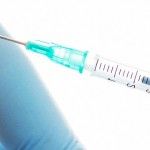NHTSA Names New Office of EMS Director
From NHTSA on January 13, 2022
Long-time OEMS Staff member assumes leadership role
The National Highway Traffic Safety Administration (NHTSA) today announced that Gamunu Wijetunge, NRP, will assume the role of Director of the Office of EMS effective January, 29, 2022.
Gamunu “Gam” Wijetunge, who has worked within NHTSA’s Office of EMS for more than 20 years, is also a volunteer paramedic, fire captain and the president
of a volunteer rescue squad in Maryland. He will assume the director role — which is also responsible for the National 911 Program housed within the Office of EMS — following the retirement of Jon Krohmer, M.D., FACEP, FAEMS.
“For many years, Gam has been a leader within NHTSA’s Office of EMS, an
advocate for clinicians, and a trusted colleague for both Federal partners and Fire/EMS organizations,” said Dr. Krohmer. “His commitment to collaboration within the EMS community may be best illustrated through his stewardship of EMS Agenda 2050, which sets a clear path for the continued improvement of people-centered EMS systems for the next 30 years.”
Throughout his tenure at NHTSA, Gam has played an integral collaborative role in the development of EMS systems nationwide. These include leading efforts to:
- Develop evidence-based guidelines and tackle EMS system improvement issues
- Address recruiting, retention, clinician safety and other EMS workforce topics
- Improve national EMS preparedness through coordination with other Federal agencies
- Facilitate consensus and collaboration within leadership and working groups of the Federal Interagency Committee on EMS (FICEMS).
“I am thrilled to continue the office’s collaborative work side-by-side with our Federal partners, EMS stakeholders nationwide, and my colleagues at NHTSA,” said Gam. “I look forward to continuing Jon’s good work to support state, regional and local EMS and 911 agencies as we strive to advance our people-centered EMS and 911 systems.”
Wijetunge has a Bachelors’ Degree in Emergency Health Services from the University of Maryland, Baltimore County and a Master of Public Management from the University of Maryland, College Park. He has several professional affiliations and has been recognized repeatedly for outstanding performance and federal service, including most recently the HHS/ASPR COVID-19 Pandemic Civilian Service Medal in 2021.
Congratulations to Gamunu Wijetunge, the newly-appointed Director of @NHTSAgov's Office of #EMS! We look forward to continued collaboration to ensure #mobilehealthcare excellence for all Americans. #SupportEMS #NotJustaRide #AlwaysOpen pic.twitter.com/qHO3REmlEk
— AmericanAmbulanceAsc (@amerambassoc) January 13, 2022













_2.png?width=250&height=220)


